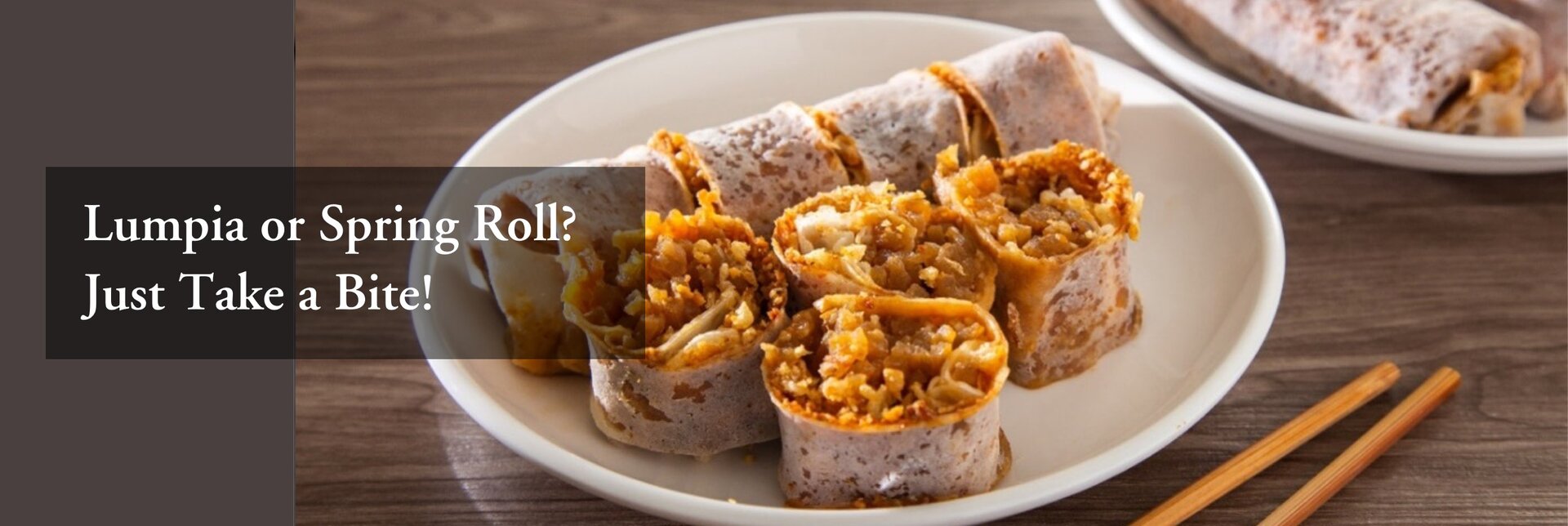Lumpia or Spring Roll? Just Take a Bite!
The story of Duke Wen of Jin and Jie Zhitui in the Spring and Autumn Period adds a historical touch to the Cold Food Festival. Cold Food Festival often refers to the 105-106 days after the Winter Solstice. The festival is a reminder of dry weather, so people do not cook with fire on this day but prepare some ingredients in advance and roll them up with crust. That was the origin of lumpia (潤餅). The Cold Food Festival is close to “Qingming”, one of the 24 solar terms. After the Tang Dynasty, people paid more attention to Qingming and organised many activities during this period, so it gradually became a significant festival in Chinese culture. Eating lumpia also became a tradition in the third lunar month. It was when the “East Asian cultural sphere” influenced the surrounding countries and spread overseas, along with the food culture.

In Vietnamese food, aside from pho, sandwiches, and dripping with French colonial influence, Vietnamese spring rolls should also appeal to most people's tastes. Vietnam and China had been in a vassal relationship for over a thousand years. For a long time, the geographical area of “South Vietnam”, as defined by ancient China, covered today’s North Vietnam. The extended communication introduced rice food from South China into Vietnam. Vietnamese spring rolls are made of rice rinds with lettuce, seafood, meat slices, and fish sauce, perfectly integrating Chinese rice culture, Western lettuce, and Southeast Asian local condiments.

During the migration waves in the Late Qing and Republican Era, most people from Fujian and Guangdong went to Southeast Asia or Taiwan, so their native food was brought into these places and localised. The ancestors of the Taiwanese mostly came from Quanzhou and Zhangzhou, and they used slightly different fillings for lumpia. A common understanding is that it is called lumpia in the North and spring roll in the South. In Matsu, where many are of Fuzhou origin, it is called “spring cake”. In Malaysia, under the influence of the Chaoshan people in Guangdong and the Xiamen people in Fujian, lumpia is often served with jicama, a common ingredient in Southeast Asia. Some restaurants would cut it into sections and top it with sauce. This is how lumpia is localised in the Malaysian context.


Whether it is called lumpia or spring roll, this Chinese dish remained popular with the development of modern imperialism when the Dutch rule Indonesia and Spain ruled the Philippines. Many Chinese workers were recruited to these countries due to the high demand for labour in planting cash crops and mining. Therefore, lumpia has also become a typical Chinese snack in these places and even facilitated diversity in language. For example, it is “leompia” in Indonesian and “lumpia” in ChowKing “超群”, a Chinese chain restaurant in the Philippines. These foreign words have enriched the vocabulary of Southeast Asian countries and influenced the colonial mother country during the colonial period. Nowadays, “leompia” has become a microwave food sold in supermarkets in the Netherlands and a loanword in Dutch.
When you bite into a lumpia, other than tasting the flavour on your tongue, you can also feel the rich history of the transmission of food culture in your mind.
Reference:
Book
1. 陳靜宜:《喔!臺味原來如此》(臺北:麥浩斯出版股份有限公司,2021年)。
All articles/videos are prohibited from reproducing without the permission of the copyright holder.




Welcome to leave a message:
Please Sign In/Sign Up as a member and leave a message